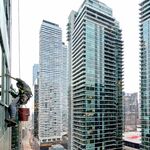W
wyliepoon
Guest

Link to article
Upgrade Announced for French Business District
November 10, 2006
In July, the French government announced major long-term redevelopment plans for the suburban Paris business district La Défense in order to shore up aging buildings and to make the zone more competitive internationally.
Built over a looped network of roads at the end of Paris’s historic axis, the urban design of the 160-hectare La Défense was inspired by Le Corbusier’s concept of towers in a park. The project, named for the Franco-Prussian War monument La Défense de Paris, began in the 1950s alongside postwar economic recovery: Houses, small factories, and farms were first demolished to make way for the Center of New Industries and Technologies (CNIT), the 1958 exhibition hall built by the Federation of Engineering Industries to show off French industrial achievements; the Etablissement Public pour l'Aménagement de La Défense (EPAD) was founded the same year to purchase land for the future district.
Although built in phases afterward, the overall urban design of La Défense has “changed little†says Bernard Bled, director of EPAD, the public authority that manages La Défense. “It is necessary to make it better, more daring, more modern,†he says.
“We must rethink La Défense’s urban design,†says Transport Minister Dominique Perben, “and look at what’s happening elsewhere with La Défense’s competitors, London’s Docklands, Barcelona, Amsterdam, Milan, Madrid, and Frankfurt—the creativity, the energy, the boldness.â€
Even in its infancy, commentators criticized La Défense for failing to engage the street or to mix uses. The newspaper Le Figaro reported, “The walkways at midday are about as quiet as a Sunday afternoon in the country, and at night you could think there’s a curfew.†The CNIT, however, was celebrated for its thin-concrete, 153-foot roof span.
One in six La Défense buildings was built before 1985 and has not been refurbished since. Work will begin with the partial demolition and modernization of 17 high-rise buildings, and includes Kohn Pedersen Fox’s redesign of Axa Tower, which, reconstructed to a height of 738 feet, will become the tallest building in France. Other projects include the refurbishment of the Quatre Temps shopping complex as well as the overhaul of the interior of CNIT.
Along the front of the CNIT’s semicircular glass façade, four terraces will be sunk into the pedestrian-only parvis, or esplanade, which runs up the spine of La Défense. Crossed by footbridges, the sunken, planted terraces are designed to reveal the full height of the building, whose base was concealed by the construction of the parvis.
New skyscraper construction is due to start in 2007. That effort will create at least 3.2 million square feet of floor space over a five-year period. And 1,400 apartments are due to be completed by 2013, followed by the extension of a fast-transit train line to improve links between the capital, La Défense, and the surrounding region. The project will be financed by the sale of building permits.
EPAD also announced that it will launch an international architecture competition this year. The winning architectural firm will construct an iconic building, the Tour Signal, which will symbolize the urban renewal of the district.




